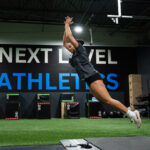Building Confidence Through Athlete Development
Athlete development isn’t just about physical growth. It also plays a key role in building confidence and mental strength. When athletes train consistently, learn new skills, and overcome challenges, they begin to believe in themselves more deeply.
In this article, we’ll explore how athlete development boosts confidence and how to support that process in athletes of all ages.
Why Confidence Matters in Athlete Development
Confidence is one of the most important traits for athletes. It helps them:
-
Take risks and try new skills
-
Bounce back from failure
-
Perform under pressure
-
Stay focused and positive
Confidence doesn’t just show up—it’s built through development. That’s why programs that combine skill training, goal setting, and mindset work are so effective.
The Connection Between Growth and Confidence
Athletes build confidence when they experience progress. Every small success—learning a skill, improving a time, or lifting more weight—reinforces the belief that they’re capable.
Key Confidence Builders in Athlete Development:
-
Skill mastery: Repetition and coaching help athletes feel in control.
-
Strength and conditioning: Physical strength leads to mental strength.
-
Goal achievement: Hitting a target creates pride and momentum.
-
Positive feedback: Encouragement fuels belief and motivation.
When athlete development focuses on effort and progress, confidence naturally follows.
Mental Skills to Include in Athlete Development
Developing the body is only part of the picture. Mental skills training also plays a huge role in an athlete’s growth and confidence.
Core Mental Skills for Confidence:
-
Visualization: Athletes imagine themselves succeeding to boost performance.
-
Positive self-talk: Replacing doubt with encouragement changes mindset.
-
Focus techniques: Helps athletes stay present and in control.
-
Breathing exercises: Reduces stress and keeps nerves in check.
Integrating these into daily routines can make a lasting impact on confidence levels.
Supporting Confidence in Young Athletes
Confidence can be fragile—especially in younger athletes. Coaches and parents must create an environment where confidence can grow.
Here’s how:
-
Celebrate effort, not just results
-
Encourage athletes to try new things
-
Be patient with mistakes—they’re part of learning
-
Set realistic and meaningful goals
-
Avoid comparisons with others
Programs like Next Level Athletics USA focus on holistic athlete development, including the mental and emotional aspects of training.
Sample Practice Structure That Builds Confidence
A well-designed practice session should boost both skill and belief. Here’s a simple format:
-
Warm-up (10 min): Include games to build engagement and energy
-
Skill development (30 min): Break skills into steps, offer feedback
-
Mini-challenges (15 min): Let athletes test progress and push limits
-
Cool-down and reflection (5 min): Ask what went well, and what to improve
Reflection and goal tracking help athletes own their development—and their confidence.
Common Confidence Killers to Avoid
While development can build confidence, certain habits or behaviors can tear it down. Be aware of these confidence killers:
-
Over-coaching: Too much correction can overwhelm athletes
-
Public criticism: Feedback should be private and respectful
-
Overemphasis on winning: Focusing only on results creates pressure
-
Comparing athletes: Each athlete grows at their own pace
-
Ignoring mental health: Stress and anxiety can block confidence
Confidence takes time to build—and seconds to break. Be intentional with your coaching and communication.
Stories of Confidence Gained Through Athlete Development
Athletes across all sports gain confidence through structured training and support. One example:
A 13-year-old basketball player started training to improve speed and strength. At first, she hesitated to lead drills or take shots in games. Over time, as her strength grew and she hit small goals, she became more assertive. By the end of the season, she was starting games and leading her team in steals.
That transformation wasn’t just physical—it was rooted in confidence gained through consistent athlete development.
For more guidance on boosting self-confidence, visit Healthline’s guide.
Final Thoughts
Athlete development is about more than physical performance. It’s a powerful path to building confidence, self-belief, and resilience.
With the right support, athletes of any age can grow stronger—inside and out. Celebrate progress, focus on effort, and keep the long-term view in mind. When athletes believe in themselves, there’s no limit to what they can achieve.


Recent Comments